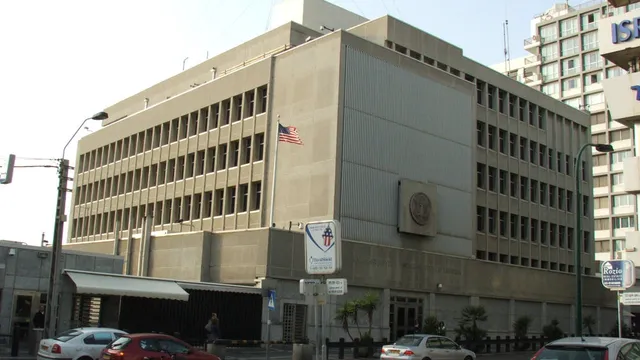
Joseph Neumeyer attempts to firebomb U.S. Embassy in Tel Aviv
2025-05-26 12:17- Joseph Neumeyer arrived in Israel in April and carried out an attempted firebombing on May 19, 2025.
- He was arrested after a confrontation with a guard at the U.S. Embassy branch office in Tel Aviv, where he left behind a backpack containing Molotov cocktails.
- The incident highlights concerns over violence against U.S. diplomatic missions and escalated threats linked to social media.
Express your sentiment!
Insights
Joseph Neumeyer, a dual U.S.-German citizen, was arrested for attempting to attack the U.S. Embassy in Tel Aviv, Israel. The incident occurred on May 19, 2025, when Neumeyer approached the embassy with a backpack containing multiple Molotov cocktails. He had arrived in Israel a few weeks earlier, after traveling from the U.S. to Canada before landing in Tel Aviv. Preceding the attack, Neumeyer made several threatening social media posts that indicated his intent to cause harm to the embassy and Americans. After confronting an embassy guard and fleeing the scene, he was apprehended at a hotel nearby and deported back to New York. Neumeyer now faces serious federal charges, including attempting to destroy government property, which could lead to a lengthy prison sentence and significant fines. This incident has raised alarm regarding threats to U.S. diplomatic missions and security, reflecting ongoing global tensions surrounding American foreign policy and its implications.
Contexts
The history of attacks on U.S. embassies is a significant aspect of global diplomatic relations, highlighting the vulnerabilities of diplomatic missions and the persistent threats they face throughout history. Starting from the early days of U.S. diplomacy, with incidents such as the 1979 Iran hostage crisis, where Iranian militants seized the U.S. embassy in Tehran, there has been a pattern of violence aimed at U.S. diplomatic buildings. This crisis marked a turning point in how the U.S. approached issues of security and diplomacy, leading to a reevaluation of how embassies are protected against possible threats from hostile entities. Subsequent attacks have illustrated that embassies are often targeted during periods of heightened political instability, and the motivations behind these attacks range from public protests against U.S. foreign policies to outright acts of terrorism and war. In the 1990s, the U.S. faced two significant attacks: the 1998 bombings of the U.S. embassies in Kenya and Tanzania, coordinated by Al-Qaeda, which killed over 200 people and underscored new threats from extremist terrorist organizations. These bombings highlighted the need for improved security measures at embassies worldwide, resulting in heightened surveillance and fortified structures. The aftermath of the attacks led the U.S. government to invest significantly in embassy security, including implementing the Overseas Buildings Operations program, which aimed to design embassies with security as a paramount concern. The occurrences also play a pivotal role in shaping foreign policy, particularly in regions where threats are prevalent. The 21st century saw the continuation of attacks on U.S. embassies, with incidents such as the 2012 Benghazi attack in Libya, where four Americans, including U.S. Ambassador Christopher Stevens, were killed during an assault on the consulate. This incident was particularly damaging, raising questions about the adequacy of security measures in volatile regions and the response of the U.S. government to assess threats in real-time. Analysis of these attacks reveals a complex interplay between local geopolitical issues, anti-American sentiment, and the operational capabilities of terrorist organizations, signaling that the threats embassies face are not just a result of isolated incidents but are tied to broader political dynamics. In summary, the history of attacks on U.S. embassies illustrates a continuous evolution of threats, necessitating a robust response in terms of security and diplomatic strategies. Incidents from the 1979 Iran hostage crisis through the 1998 bombings to the 2012 Benghazi attack demonstrate that embassies remain vulnerable targets, which require ongoing assessment and adaptation to ensure the safety of diplomatic personnel and the integrity of U.S. foreign relations. The importance of these events cannot be underestimated, as they not only affect the safety of Americans abroad but also shape international perceptions of the U.S. and its foreign policy positions.